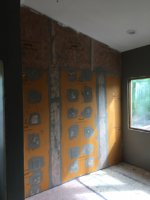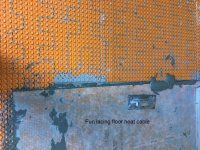wkearney99
Member
- Joined
- Jun 6, 2014
- Messages
- 68
If anyone's looking for a good tile forum, try John Bridge
There's a ton of great threads over there.
There's likely more ways to lay tile than any other building material. But you never, ever lay it straight onto wood without at least some sort of stabilizing and waterproofing material. Wood moves too much and tile does not, so just a moisture barrier like RedGuard is NOT enough. Likewise, tile and mortar are not 100% waterproof. They're pretty good at resisting water going through them, but they're porous enough, and there's enough potential for cracks in grout, so make for some really ugly problems if you don't properly manage moisture.
There's a ton of great threads over there.
There's likely more ways to lay tile than any other building material. But you never, ever lay it straight onto wood without at least some sort of stabilizing and waterproofing material. Wood moves too much and tile does not, so just a moisture barrier like RedGuard is NOT enough. Likewise, tile and mortar are not 100% waterproof. They're pretty good at resisting water going through them, but they're porous enough, and there's enough potential for cracks in grout, so make for some really ugly problems if you don't properly manage moisture.



